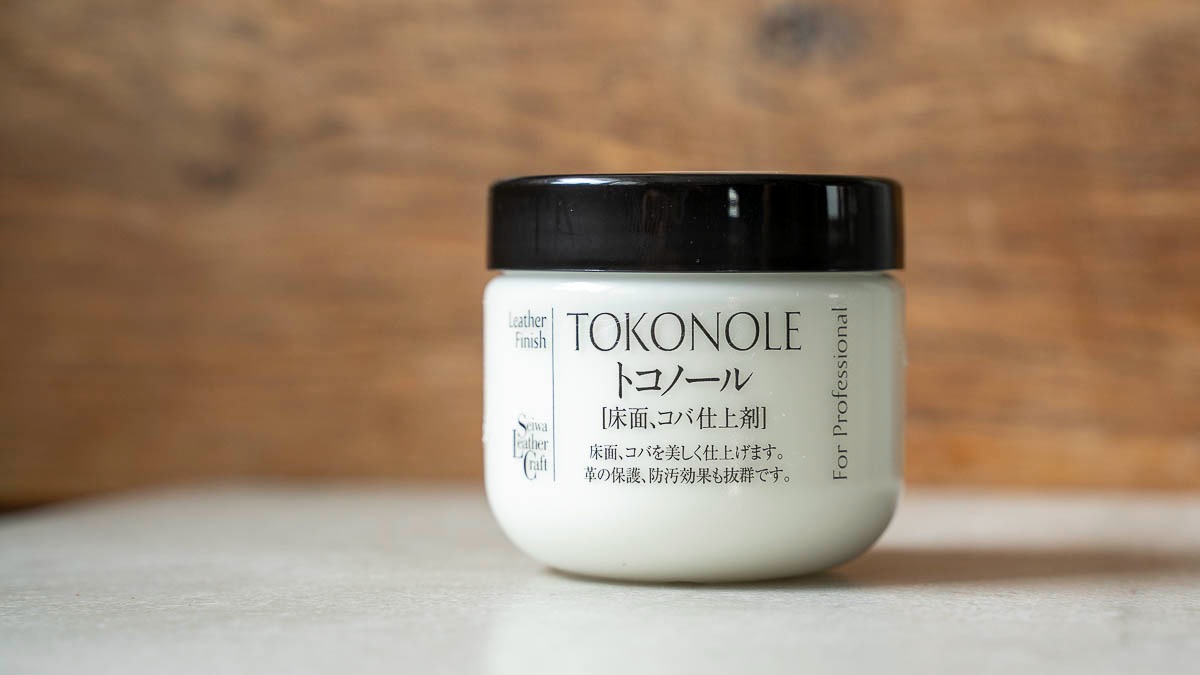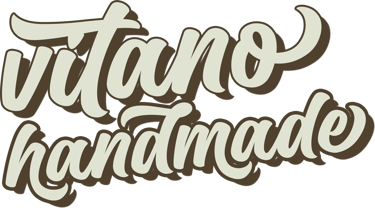What is Tokonole?
Knowledge of leather
Vitano Handmade
6/2/20253 min read


Tokonole is a leather finishing and burnishing cream originating from Japan, produced by Seiwa. It is a water-based, odorless, non-toxic product made from natural and synthetic ingredients such as beeswax, natural gum, and synthetic resin. Tokonole is primarily used in leathercraft for:
Finishing leather surfaces: Applied to the flesh side (rough side) of leather to smooth out fibers and create a clean, professional appearance.
Edge burnishing: Helps compress and polish leather edges, especially on vegetable-tanned leather, resulting in a smooth, glossy finish. When semi-dry, it is rubbed vigorously to enhance shine.
Versatility: Suitable for both vegetable-tanned and chrome-tanned leather, though it performs best on vegetable-tanned leather. Its water-based nature makes it compatible with dyes or other finishes.
How to use:
Apply a thin layer of Tokonole to the leather edge or flesh side using a finger, sponge, or burnishing tool.
When semi-dry, rub vigorously with a cotton cloth or burnishing tool to achieve a glossy finish.
Repeat the process as needed for desired results.
Tokonole is highly regarded in the leathercraft community for its ease of use, suitability for beginners and professionals, and ability to produce a durable, glossy finish. However, it is not waterproof, so it is often paired with beeswax or a sealant for added protection.
Chemical Composition of Tokonole
The exact chemical formula of Tokonole is not publicly disclosed, as it is a proprietary commercial product. According to Seiwa, Tokonole is a water-based mixture containing:
Beeswax: A natural wax with a general chemical formula of C15H31COOC30H61 (myricyl palmitate, a primary component of beeswax).
Natural gum: Likely includes natural polymers such as collagen-based gums, though specific compounds are not detailed.
Synthetic resin: Typically water-soluble polymers like acrylic or polyurethane emulsions, but exact formulations are proprietary.
Water: The primary solvent, making up the bulk of the product.
Due to its proprietary nature, precise ratios and additional components are not disclosed. A detailed chemical analysis would require laboratory testing, which is uncommon for craft products like Tokonole.
Alternative Products
Tokonole is primarily used for finishing and burnishing leather edges, especially on vegetable-tanned leather. Below are comparable alternative products widely used in leathercraft:
Gum Tragacanth:
Composition: A natural polysaccharide extracted from Astragalus plant sap, water-soluble.
Use: Smooths and burnishes leather edges, creating a natural shine. Typically diluted with water before use.
Advantages: All-natural, easy to use, ideal for vegetable-tanned leather.
Disadvantages: May produce less shine than Tokonole, requiring more burnishing effort.
Availability: Available from suppliers like Tandy Leather or specialty leathercraft stores.
Saddle Soap:
Composition: A blend of soap (sodium salts of fatty acids, e.g., C17H35COONa), glycerin, and sometimes beeswax.
Use: Smooths leather surfaces and edges, also used for cleaning and conditioning.
Advantages: Versatile, suitable for cleaning and burnishing.
Disadvantages: Less specialized for edge burnishing than Tokonole, with less glossy results.
Availability: Available from Fiebing’s, Tandy Leather, or other leathercare brands.
Fiebing’s Edge Kote:
Composition: Water-based acrylic resin, dyes, and thickeners (exact formula proprietary).
Use: Coats and burnishes leather edges, available in multiple colors.
Advantages: Durable coating, easy to apply, suitable for both vegetable-tanned and chrome-tanned leather.
Disadvantages: Less natural than Tokonole, may feel more "plastic-like."
Availability: Fiebing’s, widely available at leathercraft suppliers.
CMC (Carboxymethyl Cellulose):
Composition: C8H15NaO8, a natural or semi-synthetic polymer, typically diluted in water.
Use: Smooths leather surfaces and edges, providing a light gloss when burnished.
Advantages: Affordable, eco-friendly, widely available.
Disadvantages: Less effective for high-gloss burnishing compared to Tokonole, requires skill.
Availability: Found at chemical suppliers or leathercraft retailers.
Eco-Flo Edge Dressing (by Tandy Leather):
Composition: Water-based synthetic resin blend, similar to Tokonole, with added colorants.
Use: Burnishes and protects leather edges, suitable for various leather types.
Advantages: User-friendly, eco-friendly, available in multiple colors.
Disadvantages: Coating durability may be lower than Tokonole.
Availability: Tandy Leather or other leathercraft distributors.
Comparison and Notes
Natural composition: Tokonole and Gum Tragacanth are more natural compared to Fiebing’s Edge Kote or Eco-Flo, appealing to those prioritizing eco-friendly products.
Burnishing performance: Tokonole excels in gloss and ease of use, while Gum Tragacanth requires more burnishing effort.
Application: Most products work best on vegetable-tanned leather, but Fiebing’s Edge Kote and Eco-Flo are more versatile for chrome-tanned leather.
Cost and availability: Tokonole may be pricier than alternatives like CMC or Gum Tragacanth but is widely available through international retailers (e.g., Amazon, Etsy, or Seiwa distributors).
